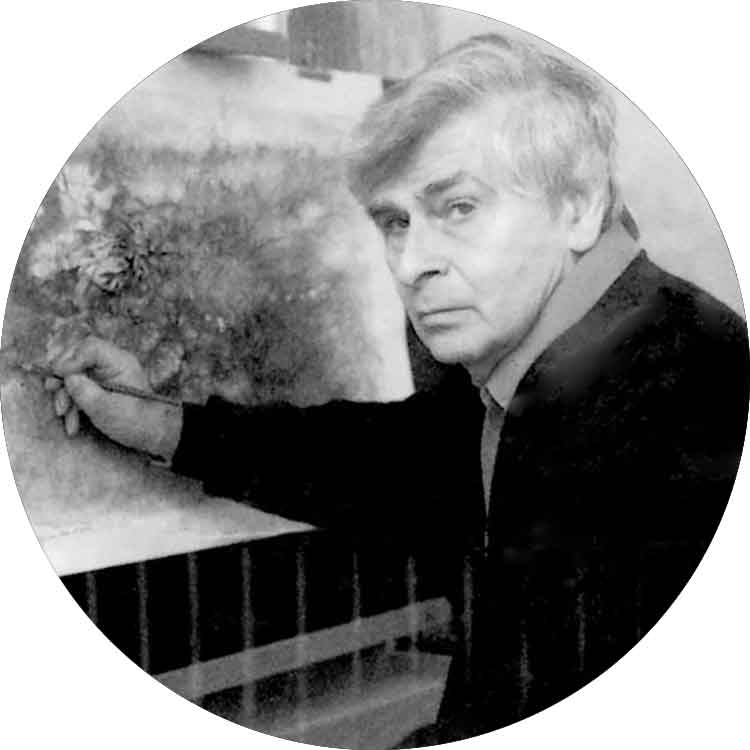Renzo Vespignani OPERE

Renzo Vespignani, born on February 19, 1924, in Rome, was an Italian painter and engraver who established himself as a central figure in the Italian artistic scene of the 20th century. Son of Guido Vespignani and Ester Molinari, and great-grandson of the architect Virginio Vespignani, he grew up in a culturally rich environment. After the loss of his father, a renowned surgeon and cardiologist, he and his mother moved to the working-class district of Portonaccio, near San Lorenzo in Rome. It was during this difficult period and the Nazi occupation that Renzo Vespignani began to draw, portraying the harsh reality around him, such as war ruins and the daily life of the marginalized.
His art is expressed in various forms: painting, illustration, set design, and engraving. During the Nazi occupation, he took refuge with the engraver Lino Bianchi Barriviera, who became his first teacher. In these years, Renzo Vespignani was influenced by artists like Alberto Ziveri and Luigi Bartolini, and showed a clear interest in the expressionism of George Grosz and Otto Dix.
In 1945, he held his first solo exhibition and began collaborating with various political-literary magazines, such as "Domenica", "Folla", "Mercurio", and "La Fiera Letteraria", contributing with writings, illustrations, and satirical drawings. His work during this period reflects the attempt to rebuild an Italy devastated by war.
Renzo Vespignani was also active as a set designer, working on productions such as “I giorni contati” and “L'assassino” by Elio Petri, as well as collaborating on projects by Hans Werner Henze and Bertolt Brecht. As an engraver, he created over four hundred artworks using techniques such as etching and lithography.
In the 1950s, Renzo Vespignani began to gain international recognition. He participated in the 25th Venice Biennale in 1950, where he received the first prize for black and white, and continued to take part in exhibitions both in Italy and abroad. In 1956, he founded the magazine "Città Aperta", focused on urban culture issues, and began to distance himself from Neorealism, exploring themes related to postwar Italian reality.
During the 1960s and 1970s, Renzo Vespignani dedicated himself to large painting cycles reflecting the crisis of the welfare society, such as "Imbarco per Citera" and "Album di Famiglia". These works offer a sharp critique of contemporary society, often through a polemical and introspective lens.
His deep connection with literature is evident through his numerous collaborations as an illustrator. Renzo Vespignani worked on classical and contemporary texts, including Boccaccio's "Decameron", the poems of Leopardi, the works of Kafka and Eliot, and much more.
In 1999, he was elected President of the National Academy of San Luca and appointed Grand Officer of the Order of Merit of the Italian Republic. This recognition highlights his important contribution to Italian culture and art.
Renzo Vespignani died on April 26, 2001, in Rome, leaving a significant artistic legacy and a profound mark on the Italian and international cultural scene.
Ti piace Renzo Vespignani?
Per ricevere gli ultimi aggiornamenti di questo artista, lascia la tua email qui sotto:









